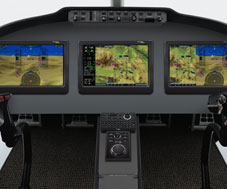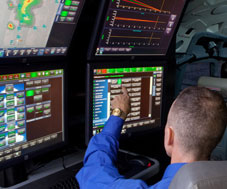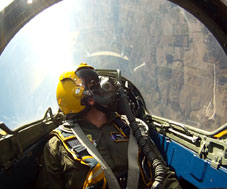Across the geographies and market segments we serve, there's never been a greater demand for solutions that combine cost efficiency with high capability. Emerging governments seek effective budget-conscious technologies free from International Traffic in Arms Regulations (ITAR) restrictions. Business aircraft manufacturers demand affordable ways to incorporate advanced, intuitive avionics into smaller aircraft. Faced with high fuel prices, airlines leverage every reasonable software and hardware technology to maximize the bottom line. And government purchasers in the United States and Europe respond to today's declining budgets and stricter oversight by demanding more from their suppliers.
Rockwell Collins' balanced business model and culture of collaboration promote the sharing of technological advances and savings between military and commercial solutions. Our engineers constantly seek new approaches to deliver high-performance solutions while reducing size, weight, power and cost. New design tools, virtual prototyping and development processes to encourage fail-fast, fail-early outcomes are employed to reduce cycle times and avoid costly rework late in the design process. Commercial off-the-shelf (COTS) solutions can reduce costs and offer greater flexibility. And enterprise-wide Lean ElectronicsSM initiatives promote a culture dedicated to continuous improvement and customer value.

Scalable design for faster, flexible configuration
The hallmark of Rockwell Collins' next generation Pro Line Fusion integrated avionics system is scalability: the system's architecture and hardware-independent software can be adapted to configurations ranging from turboprops to regional transports, while reducing development costs and cycles. This scalability also makes the system attractive to military applications, with positions on platforms including Embraer's KC-390 tanker/transport and AgustaWestland's new AW609 TiltRotor. It also allows for the incorporation of new technologies as they become available, extending the life cycle and functionality of the aircraft.

Open – and more efficient – architecture
As the pace of innovation continues to accelerate, customers want to know that the solutions they purchase today will allow for improved capabilities and features over time. Our open systems solutions enable commercial and government customers alike to benefit from easy upgrades and readily supported third-party applications. Open solutions also drive cost efficiency in our advanced simulation and training offerings, which leverage our CORE™ simulation architecture to maximize life cycle value and enhance training effectiveness by allowing for integration of the latest COTS technologies and enabling implementation across a family of training solutions, from desktop trainers to full flight simulators.

LVC: Increased readiness at reduced cost
The cost of training a single fighter pilot often runs into the millions. That's why our Live Virtual Constructive (LVC) training systems are gaining so much interest. By integrating simulations of hostile and friendly forces with live assets — such as real jets flown by seasoned fighter pilots — the realism of air combat training can be radically enhanced, increasing warfighter readiness at a reduced cost.

